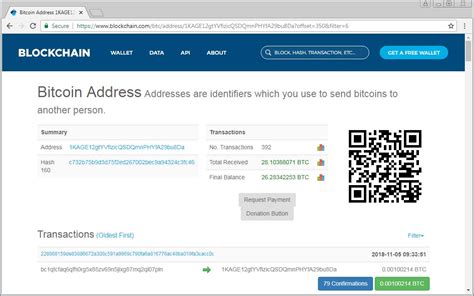How to Decrypt Bitcoin Transactions: A Guide to Recognizing Payments from Individuals
In the world of cryptocurrencies, transactions are made pseudonymously, so it is essential to verify who paid a certain amount of bitcoin. While public keys and addresses can provide some clues, there are other methods to detect whether an individual has paid or not. Here is how to distinguish between two different people making a payment.
The Case for Public Keys
Bitcoin transactions involve both the sender (S) and recipient (R) addresses. When the amount is the same, the sender's address can be used as a key to identify who paid. For example:
- Sender:
S = "bitcointalk"
- Recipient:
R = "0x1234567890abcdef"
In this scenario, if you receive two payments with the same sender address (S) and recipient address (R), it is likely that both people are paying from the same wallet.
The case of public keys (continued)
When the amount is different, public keys can be a valuable tool to identify who paid. For example:
- Sender:
S = "bitcointalk"
- Recipient:
R = "0x1234567890abcdef"
In this case, if you receive two payments with different sender addresses (S) but the same recipient address (R), it is likely that one person is sending funds from their own wallet and another person is receiving them on behalf of the other person.
More Clues
While public keys can provide a starting point for investigation, there are other factors to consider:
IP Addresses: Bitcoin transactions are pseudonymous, but IP addresses can reveal the sender's location. If you notice a consistent IP address associated with a particular wallet or account, it may indicate that a person is using a fake identity.
Transaction Fees: Transaction fees can provide clues about who paid for the transaction. If you notice a significant difference in transaction fees between two payments from different people, it's possible that one of them is using cheaper services or has inconsistent payment behavior.
Network Activity: Monitor network activity for unusual transaction patterns, such as sudden spikes in IP address usage or irregularities in transaction amounts.
Conclusion
To successfully identify who paid for a Bitcoin transaction, you will need to combine your knowledge of Bitcoin transactions with additional techniques, including:
- Public key analysis
- IP address analysis
- Transaction fee analysis
- Network activity monitoring
By using these methods, you can increase your chances of accurately identifying who paid and who didn't. Remember that no method is foolproof; a thorough investigation requires careful analysis and attention to multiple factors.